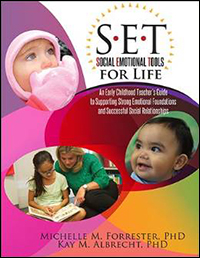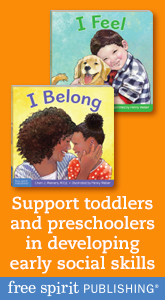ExchangeEveryDay Past Issues
 << Previous Issue
| View Past Issues | | Next Issue >>
<< Previous Issue
| View Past Issues | | Next Issue >> -Abraham Lincoln
In their popular book, Social Emotional Tools for Life, authors Michelle M. Forrester, Ph.D., and Kay M. Albrecht, Ph.D., describe how adults can help children learn to identify a range of emotions:
"It can be hard for children (and adults) to tell the difference between emotions. For a toddler there is a very fine line between frustration and rage. Noticing the difference between anger and irritation, for example, requires attention to very subtle cues, such as changes in the way a mouth looks or what the eyes are doing. Children sometimes miss these important details. You can help them learn to read these cues by exaggerating facial expressions and combining them with other physical cues, such as putting your hands on your hips or making big gestures with your hands."






Comments (1)
Displaying 1 CommentActive Louisville Kids
Boulder, CO, United States
"You can help them learn to read these cues by exaggerating facial expressions and combining them with other physical cues, such as putting your hands on your hips or making big gestures with your hands."
This recommendation makes me frustrated and angry, because it perpetuates the myth that humans can become experts at "reading" what other people are feeling just by looking at them.
Instead of learning how to look mad, disappointed, scared, or frustrated, teachers can tell a child how they are feeling, using their words. This is what most ECE's tell their toddlers/preschoolers to do. We need to set the example by modeling language that expresses our feelings.
This aspect of helping children understand other people's feelings, and to express their own, is often lost in every ECE class I take. Speak the feeling out loud. Children, like adults, can't read minds and no-one should be accountable for doing so.
Post a Comment